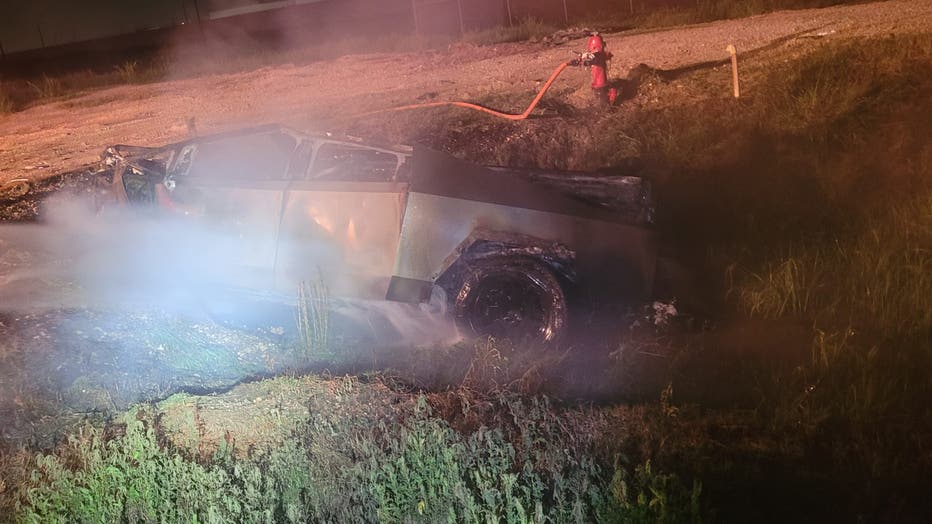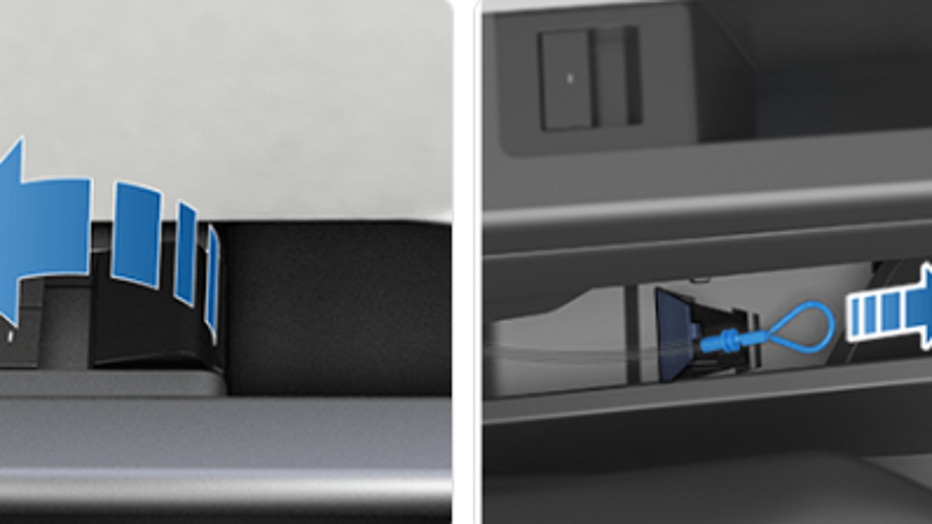A closer look at Tesla Cybertruck's design following death of 3 Piedmont students
PIEDMONT, Calif. - Nearly a month after three college students died in a fiery Cybertruck crash in Piedmont, community members are left not only grappling with grief, but also many unanswered questions about the country's first multi-fatality accident involving Tesla's modernistic, stainless steel electric pickup truck, released on the market last year.
College sophomores and 2023 Piedmont High graduates Soren Dixon, 19, Jack Nelson, 20, and Krysta Tsukahara, 19, died on Nov. 27 when the Cybertruck they were in veered off the road at 3 a.m. and struck a tree, becoming wedged next to a retaining wall, police said.
Their friend, Jordan Miller, 20, was able to get out, and he was hospitalized following the accident. His current condition has not been shared publicly.
Tesla's Cybertruck is new. The first model was released in November 2023.
Since that release, there has been only one other Cybertruck death in the country: Michael Sheehan, 47, was driving a Cybertruck and hit a large concrete culvert about 1:45 a.m. on Aug. 5 in Baytown, 30 miles east of Houston, according to the Texas Department of Safety. Sheehan's Cybertruck caught fire and burst into flames.
Like in the Piedmont case, the Cybertruck in Texas also burned so hot that it was difficult at first to determine who died and exactly what happened, officials said.
KTVU obtained photos and the autopsy from that death, where the coroner wrote that Sheehan died of "thermal burn injuries involving 100% of body surface."
In Piedmont, Police Chief Jeremy Bowers said when emergency crews arrived at Hampton Road and King Avenue, the vehicle was fully engulfed in flames.
Emergency crews tried to douse the fire with extinguishers, Bowers said, but the intensity of the flames was too hot.

Fatal Cybertruck accident on Fisher Road near Cedar Port Parkway in Texas. Aug. 5, 2024. Photo: Texas Department of Safety
Taking a closer look at the Cybertruck design
Many questions are still left unanswered in both the Piedmont and Texas Cybertruck deaths, as the National Highway Transportation Safety Administration has not begun investigating what happened in either of those deadly events.
Currently, the California Highway Patrol has custody of the Cybertruck involved in the Piedmont accident, and police have released limited details, saying only that "speed was a factor" when the college students crashed and died.
Police have not said who was driving, how fast the Cybertruck was going or if drugs or alcohol was involved.
It's also unclear if the Cybertruck was on Autopilot, or if any other part of the vehicle malfunctioned. The 2024 Cybertruck has been the subject of seven recalls.
With so many questions still unanswered, KTVU decided to take a closer look at some of the components of the Cybertruck, and speak to experts about its makeup and design.
Tesla did not respond to any question that KTVU asked.
"My first reaction was, like a lot of the crashes where I see occupants in a vehicle that catch fire in Teslas, I always wonder if those occupants were conscious and trying to escape the vehicle but were unable to," said Michael Brooks, executive director for the Center for Auto Safety. "We have seen a number of crashes involving Tesla vehicles where occupants survive the trauma of the crash but were unable to escape the vehicles because of the electronic door latches that are no longer operational."
Opening Cybertruck doors with no power
Brooks explained that once battery power is lost, people inside the Cybertruck – and other electric vehicles – have to pull a manual door handle, which he noted can be "located in very odd areas in the vehicles, and most people aren't aware of the locations."
For example, if power goes out in a Cybertruck, the manual release for back seat passengers is found in the side "map pockets" of the doors, underneath a plastic panel.
Tesla's owner's manual explains how to open doors without power. To open the front door, the manual door release is located in front of the window switches, and Tesla also gives a step-by-step guide on how to open the rear doors without power.
Brooks said how manual releases, and where they are placed, are "somewhat all over the map."
In many other types of electric vehicles, for example, the manual release works if you pull the door handle twice.
In addition, there are no physical outside door handles on a Cybertruck. Instead, you have to push a black panel on the outside of the car, which isn't immediately intuitive.
Kyle Paul, the general manager at Alset Collision in Nokomis, Florida, which provides Tesla repairs, owns a Cybertruck and told KTVU that he educated his entire family, including his 10-year-old son, on where the manual releases are.
"I want my son to know how to get out of the car," Paul said in a phone interview.

Breaking Cybertruck windows
Paul's shop went viral on the Internet in September, when videos surfaced on X and TikTok showing firefighters hacking into his personal Cybertruck to demonstrate how strong the vehicle's reinforced windows are.
He said a group of volunteer firefighters came to him, asking if they could train and educate themselves on the features of the Cybertruck. They ended up bringing more than two dozen firefighters to learn and practice.
But Paul said the videos showing the windows shattering after 12 swings with an ax are deceiving.
He said he told the firefighters to go easy on his truck and that they could have easily broken the windows with two swings.
Many high-end cars have reinforced windows, which are shatter-resistant to rocks bouncing on the road, but not to emergency extrication procedures, Paul said.
Cybertruck windows are not bullet-proof, Paul said, despite people saying so on social media.
While they were there, Paul also showed the crews how to de-activate the high voltage batteries, with an easy snip of the scissors, and he showed them a three-page manual Tesla puts out for all emergency crews.
Paul pointed out that all electric vehicles, like the Cybertruck, use lithium batteries, which are known to cause "thermal runways," a chemical reaction which takes tens of thousands of gallons to douse.
He said he wished firefighters all over the country would undergo similar training.
Setting speed limits on a Cybertruck
When Paul saw the photos of the Cybertruck tragedy in Piedmont, he immediately knew that the vehicle had been going at a high rate of speed because of the crumpled front end of the stainless steel wedged against a tree.
In his opinion, anyone driving in any type of car going that fast would have died too.
The difference is that Cybertrucks are much heavier than most cars and the "Beast" model can accelerate from zero to 60 mph in less than 3 seconds, according to Car and Driver.
Cybertrucks can weigh between two and three tons, and as Myles Russell, a civil engineer told KTVU, "these are giant creatures," and the physics of driving such a large – and fast – vehicle can be a deadly combination.
"You can write all the laws you want to," Russell said. "But you can't break the iron laws of physics."
Paul acknowledged that fact as well, adding that all it takes is a light tap on the pedal to get the Cybertruck moving very quickly – something not all drivers, especially young ones, might not be aware of.
But he added that all Teslas, including the Cybertruck, have a feature to set the speed at a certain limit so that they can't drive faster than that.
One father he knows set the speed limit to 65 mph, not necessarily for him, but for his son, who also drives the car.
"I know he set it at that because he wants his son to live," Paul said.
KTVU's Sami Mamou contributed to this story.

